Whether you have neighbors above, live on a busy street or want to reduce noise, explore these screening solutions.
From planting tall or dense foliage to erecting strategic decorative screens or adding a roof to your most-used spot, browse these expert suggestions to see what might work best for your space.
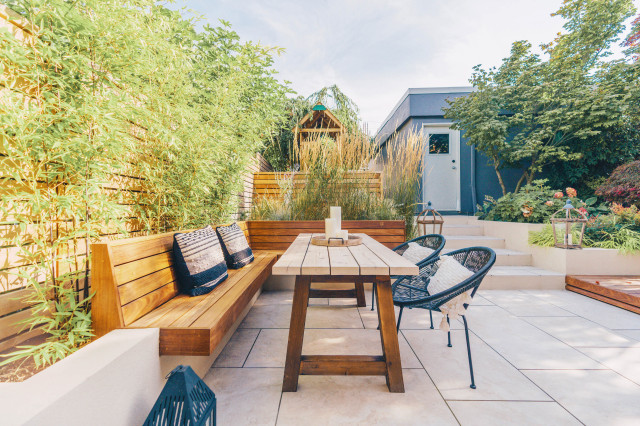
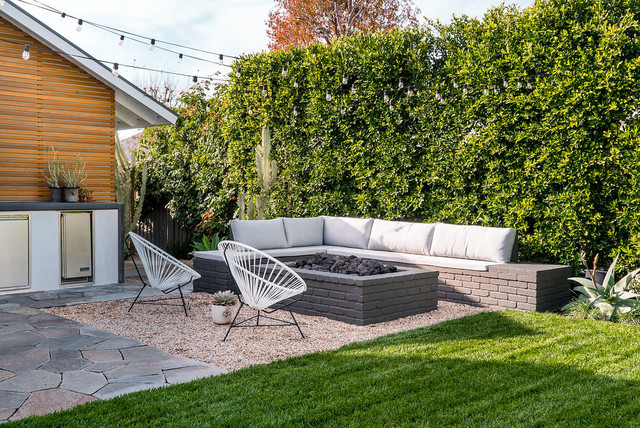
Wilson likes to use hornbeam (Carpinus sp.) for hedging, “as it holds its leaf until spring, so has added structure in the winter and looks great with a frost on the leaves,” he says.
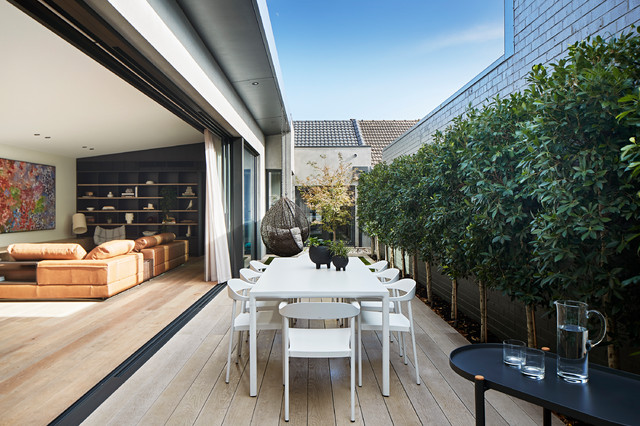
“Pleached trees are a fantastic solution for screening higher buildings beyond the garden by adding extra height above the fence line,” Lindsay says. “They’re often a great solution for your neighbors, too, as they give pleasing green screening and privacy on both sides.”
“They can add a lovely formal feel to a garden,” Tyrrell adds. European hornbeam (Carpinus betulus, zones 4 to 8) is a popular choice, and Lindsay also loves European beech (Fagus sylvatica, zones 4 to 7).
Wilson has a preference for deciduous species. “[With these,] you get seasonal change and variety, and this approach allows light levels through in the winter months while the interwoven framework of the trees will still provide a modicum of privacy,” he says.
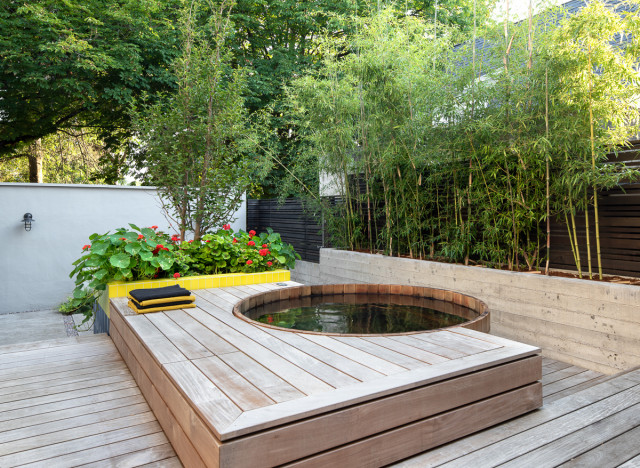
The issue is that bamboo’s roots are incredibly invasive and travel horizontally, even from clump-forming varieties. “They will pop up in neighbors’ gardens and destroy sheds and so on,” she says. “I still specify bamboo, but only planted in a strong metal trough above ground level. Many of the membranes you can use just aren’t strong enough to contain the roots. If you plant into a trough, make sure you fertilize regularly with a seaweed fertilizer.”

If you opt for climbers, you’ll likely need solutions to support them for the plants to create screening where you need it. “A wooden slatted structure is the most cost-effective support for a quick and easy screen,” Lindsay says. “Slatted trellis panels are ideal for growing climbers, as they allow them to weave in and out without the need for vine eyes and wire.”
As an alternative, Tyrrell suggests a simple mesh fence as a low-budget way to provide screening with climbers growing through it, while Wilson often uses high-quality steel wires to train climbers up onto an arch or pergola.
There are many climbing plants to choose from, and Tyrrell particularly recommends evergreens or the highly scented star jasmine (Trachelospermum jasminoides, Zone 8). Remember, evergreen is key if you need year-round cover.

If you don’t want to wait for living screens to grow over the years, there are speedier ways to create cover. “We often advise our clients to invest in mature trees and hedging, where the budget allows, in order to provide instant impact or structure, particularly where privacy is a concern,” Wilson says. “There are a number of suppliers providing ready-grown screens.”
Lindsay recommends the already-mentioned evergreen favorite star jasmine (Trachelospermum jasminoides, Zone 8). “Buy an established plant, which can then be trained together in groups to form an instant green screen. It will tolerate semi-shade but will flower better in the sun,” she says.
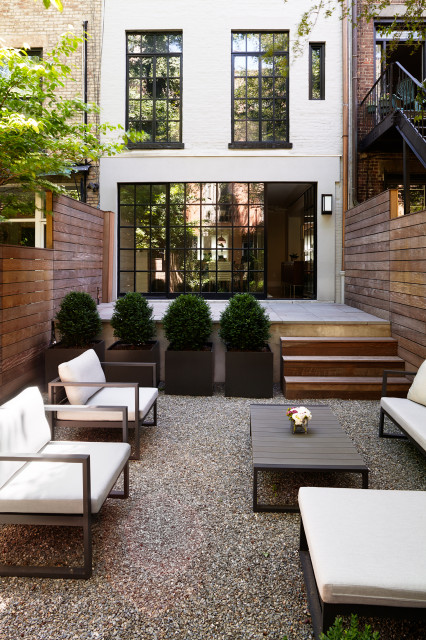
You can also purchase or build a trough and plant an instant hedge for immediate privacy. However, you must remember to add nutrients to keep the plants fed in the growing season. “Try positioning them around a terrace or seating area to define a private space,” Wilson says.
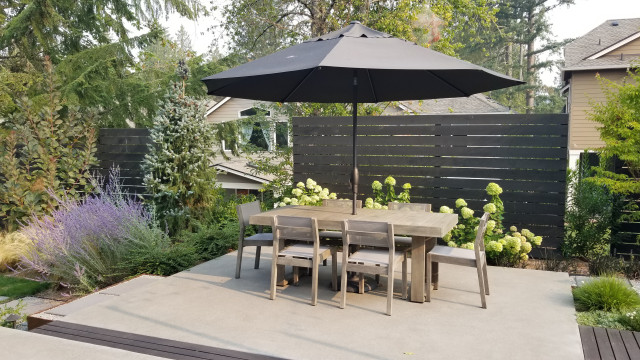
Another speedy way to create seclusion is with built landscape features. Here are some ideas.
Decorative screens. All three designers like using architectural patterned screens. “Steel fretwork panels are a favorite,” Lindsay says. “They can be particularly useful in small spaces, as the screen is so fine it doesn’t eat into the space,” she says, adding that the delicate patterns can also be backlit to create a dramatic effect.
“I also love a vertical wooden screen to create strong architectural silhouettes, the planting beyond defined in clean shafts, with closer plants emerging through the gaps,” she continues.
For rural settings or naturalistic gardens, she recommends woven willow screens. “They blend wonderfully with the planting,” she says, “and the heavy-duty woven screens add great sculptural texture.”
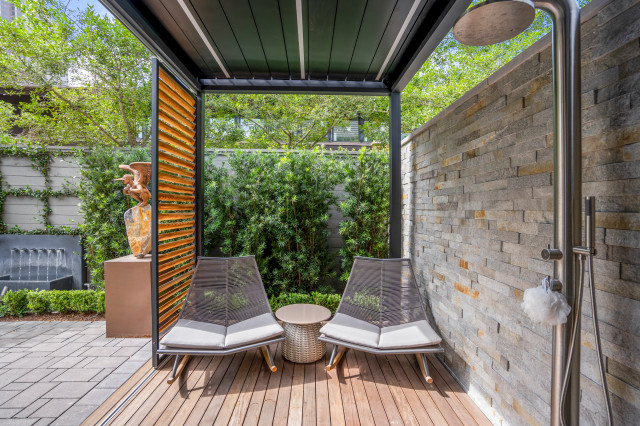
Trellises. Wilson also likes to use contemporary slatted fencing, which has slim, horizontal slats. “These [types of trellises] are great for adding privacy and breaking up space, but they also still allow light through into the garden,” he says. “In an exposed garden, they’re also great for breaking up strong winds.”
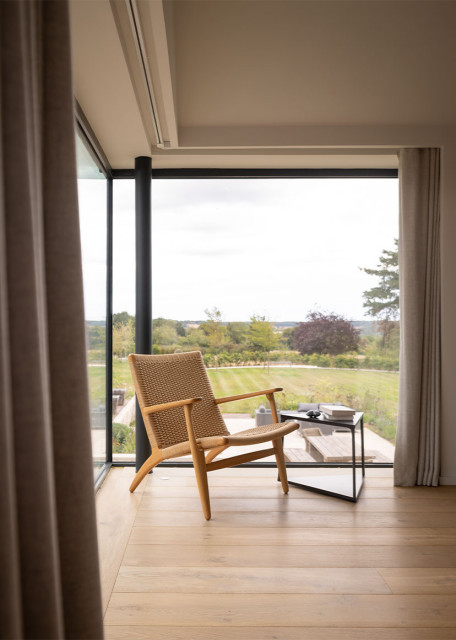
If you have particularly long boundaries, there are specific challenges to address if you also want screening along them.
“In a rural garden, a mixture of small trees and large shrubs can blur the boundaries and give you privacy,” Tyrrell says. “If well-chosen, this can give you a long season of interest and avoid the maintenance headache of hedge-cutting. It will also provide lots of scope for wildlife.”
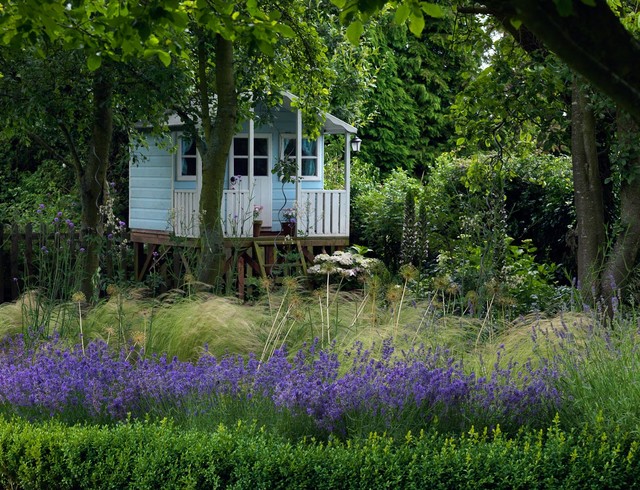
“Evergreen hedging can be great for roadside screening to reduce noise,” he continues, “and has the added benefit of mitigating the impacts of air pollution by buffering and absorbing pollutants.”
“You can’t get better than a hedgerow for a large boundary,” Lindsay says. “It creates a living and breathing green corridor.” She suggests a mixture of native species making up 50% of the hedgerow. “If you want more security, mix in holly (Ilex aquifolium, zones 7 to 9), which, with its prickly habit, is great on a boundary hedge.”

Urban gardens, or others where neighbors are more likely to look down into the space, will need a different approach.
The first step is to consider the sightlines. “Where are you overlooked from? Or, what do you want to avoid seeing?” Wilson says. “Also, where do you want privacy? In the garden? Or do you want it to prevent views into your home?”
After answering these questions, you can move forward in creating privacy in your yard, he says. “By building layers with many of the approaches discussed, you can create areas or zones within your space that are more secluded,” he says.
Adding screening overhead, in the form of a pergola or shade sail, “creates a ceiling to the outdoor room, making a cozy retreat,” Lindsay says. “The overhead structure can also facilitate [string] and pendant lights,” she says.
Tyrrell adds, “If you’re going for screening all round, try to vary it, with the back and one side having one kind of screen and the third side having a different treatment, so it doesn’t look boxed in.”
There are various ways to create privacy in your outdoor space. Growing your own screen is, perhaps, the most obvious place to start. Here’s what the experts suggest you try:
Grasses. “I love to use grasses for summer screening,” says Patricia Tyrrell of Patricia Tyrrell Living Landscapes. “There are areas in the garden, such as the patio, which only need privacy in the summertime. Plants positioned close to you provide more effective screening, but some can cast shade. Tyrell says some tall grasses, including maiden grass (Miscanthus spp.), create a semitransparent screen that allows sunlight in but also creates some privacy.
Martyn Wilson of Wilson Associates Garden Design also recommends planting tall grasses for privacy. “In order to get height in a border for screening, we use grasses such as Calamagrostis x acutiflora ‘Karl Foerster’ or ‘Overdam’, or species of Miscanthus,” he says. “They all hold their structure in winter. By double planting, these can also form an effective hedge.”
Planting note: Some species of Miscanthus can self-seed and become invasive. Check your region for invasiveness before planting.